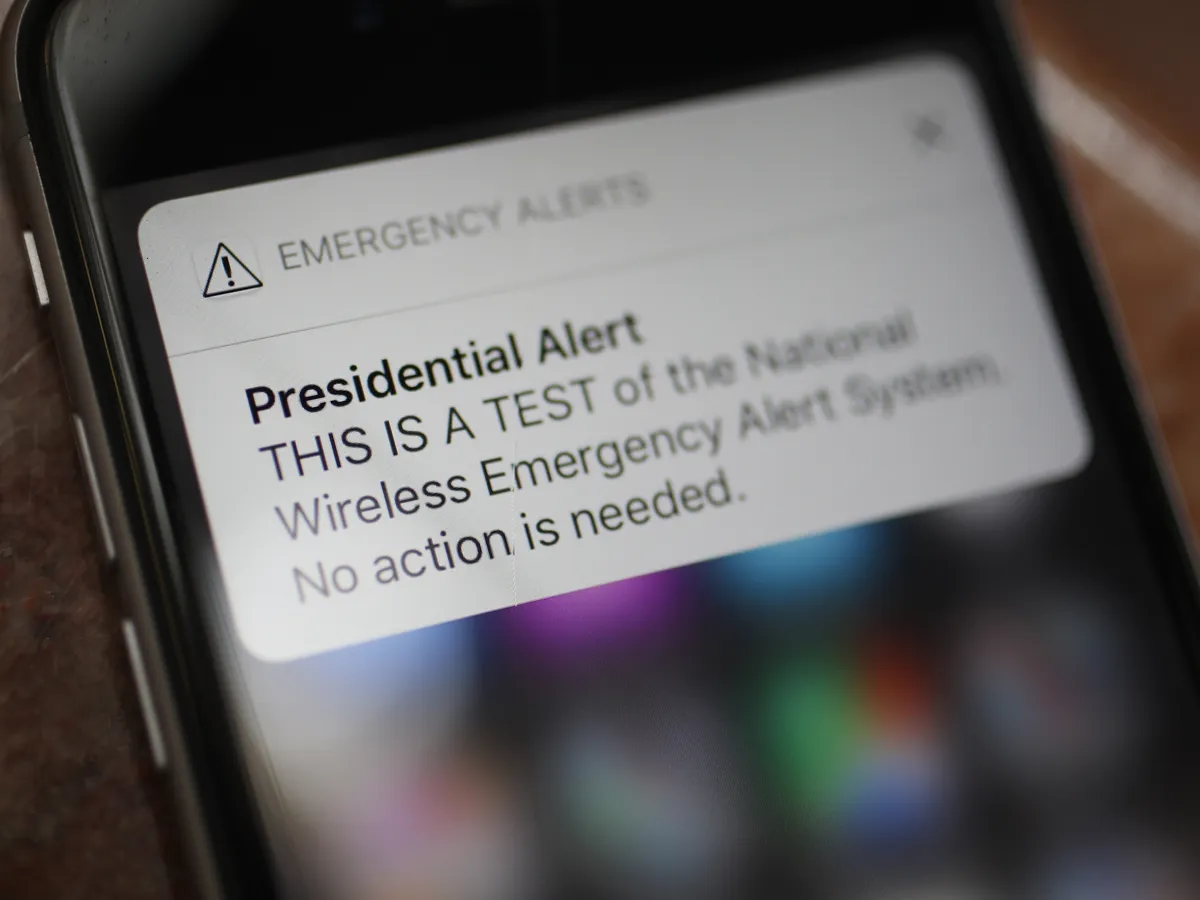October 4, 2023. A typical Wednesday where you go about your day none the wiser. Come 2:20 PM Eastern time, you will hear a loud, blaring, startling sound—the dreaded alarm sirens of the emergency alert system. Your mind begins to race as you think of the worst. A flood? A tornado? A nuclear attack? You start to panic. You pick up your phone, but it’s not just your phone. It’s every phone. Every phone, TV, and electronic device connected to the internet blares alarms. What could be so serious that it requires this kind of alert? As your fear rises, you begin to read the oversized notification that’s stuck on your phone screen: “This is a nationwide test of the emergency alert system.”
So, why exactly are we all receiving this message? The Federal Communication Commission (FCC) set up the Emergency Alert System (EAS) so that it could be used by the authorities to send important messages or warnings to the public. In the event of an emergency or impending threat, the EAS enables the government to equip citizens with timely, effective instructions locally, or nationwide. The Federal Emergency Management Agency (FEMA), FCC, and The National Weather Service (NWS) are the three governmental agencies tasked with the implementation of the Emergency Alert System. Back in 2015, Congress passed the IPAWS Modernization Act which requires FEMA to make sure that the national Emergency Alert System is up to date and in working order by testing it every three years. The next test: October 4 at 2:20 PM EST.
To test this system, all media, including radio and TV broadcasters as well as wireless cable systems and satellite operators, will broadcast an alert signal. This is to make certain that the system is operating properly in the event of an emergency that might make it necessary for the president to address the American people quickly (within 10 minutes). It goes without saying that conducting the test requires significant coordination and collaboration among different federal agencies and broadcasting systems. Thankfully there has been no need so far for a sitting president to employ such drastic measures, however, the system has been used often by the National Weather Service to notify the public of imminent and dangerous weather conditions locally or across a region.
In the state of Ohio, in addition to the National Emergency Alert, a majority of counties have set up an outdoor emergency alert system (Ohio’s Emergency Alert System) with sirens that would be activated in case of an emergency, often weather-related. Much like the EAS, these local outdoor systems are tested regularly by the authorities. However, the national and local systems can only be as reliable as the people managing them. For instance, during the first week of September 2023, when twelve tornadoes hit northern Ohio, some Cleveland suburbs failed to activate the sirens to warn the public. Since the tornadoes happened late at night when a majority of people were already sleeping and not watching TV, most residents were alarmed by the lack of sirens locally, even though those with cell phones had received a warning alert from the National Weather System.
As it turns out, the people in charge of sounding the alarm mistakenly did not deem it necessary to use the system at the time and relied on the messages sent on cell phones by the National Weather Agency. Residents without reliable cell phone service have been strongly encouraged to sign up for the Cuyahoga County (and other participating municipalities) emergency notification system that has the ability to call landlines.
While a true national emergency is rare, it is still beneficial to maintain and make good use of the EAS in the event of weather emergencies which we, as a nation, often experience. So when you hear the dreaded alarms on October 4th, you should know that there is no need to be afraid. In fact, it should make you feel secure that the EAS is working and that you will know if there ever is a real emergency.







